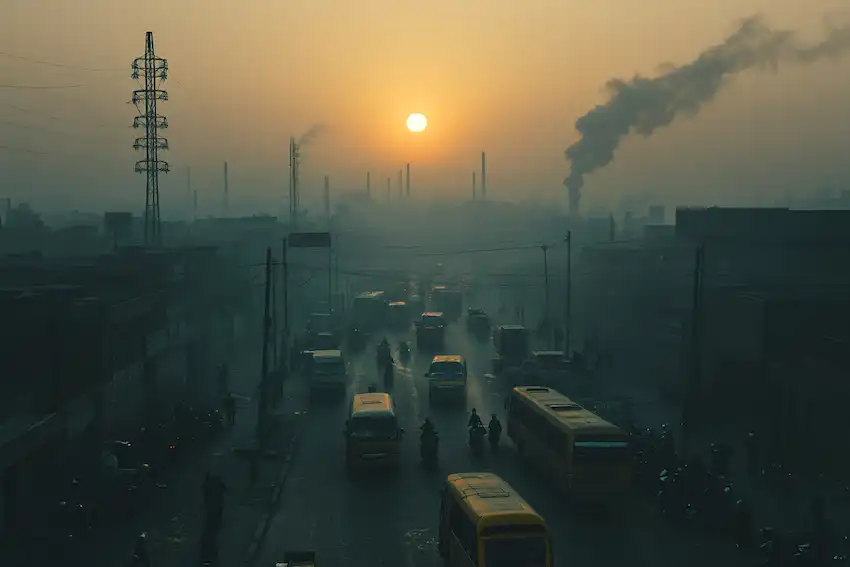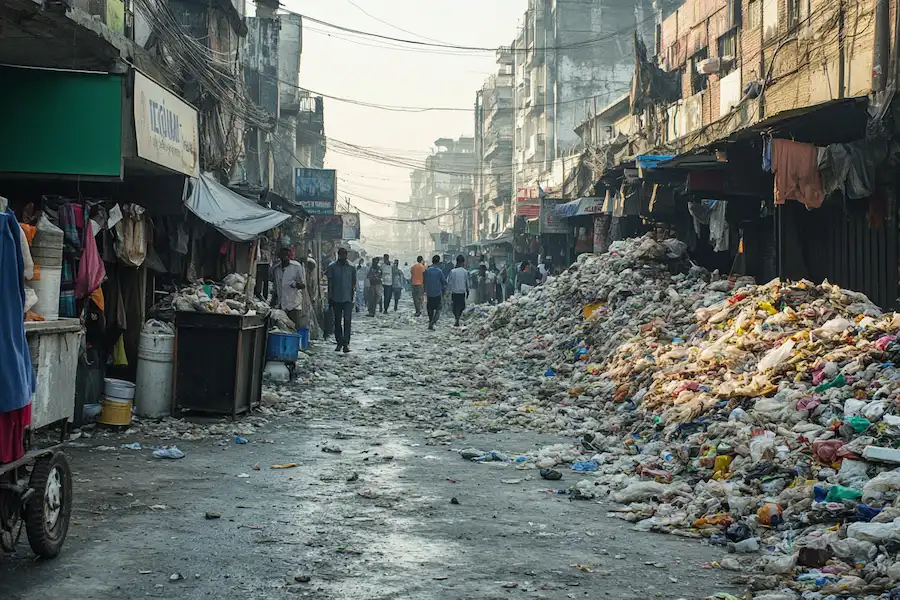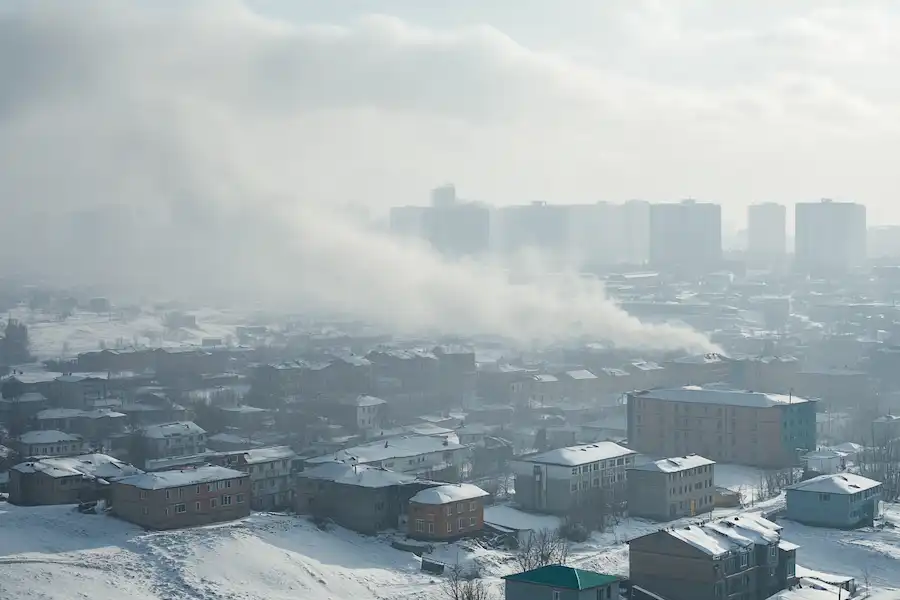The World’s Top 10 Most Polluted and Dirtiest Cities
Environmental pollution is a growing concern, particularly in rapidly urbanizing regions where industrialization, waste management, and population density can lead to deteriorating living conditions. Some cities around the globe struggle with severe pollution, waste disposal issues, and poor air quality, making them some of the dirtiest cities in the world. Here are the top 10 dirtiest cities based on various factors like air pollution, waste management, and water contamination:
1. Ghaziabad, India

Located near Delhi, Ghaziabad is infamous for its incredibly high levels of air pollution, often surpassing safe limits. The city’s rapid industrialization and vehicular emissions contribute significantly to the poor air quality, making it one of the most polluted cities in the world.
2. Kanpur, India
Another city in India, Kanpur, faces severe pollution, especially in terms of air quality. Industrial waste and vehicle emissions have left the air thick with harmful particles, making it dangerous for residents to breathe. The Ganges River, which flows near Kanpur, is also highly polluted due to industrial discharge and untreated sewage.
3. Dhaka, Bangladesh
As one of the most densely populated cities in the world, Dhaka struggles with poor waste management, overcrowding, and high levels of air and water pollution. The lack of proper sewage and waste disposal systems has left the city covered in trash and smog, making it difficult for residents to maintain healthy living conditions.

4. Lagos, Nigeria
Lagos, the largest city in Nigeria, faces major challenges with waste disposal, air pollution, and overcrowding. The city’s rapid population growth, combined with poor urban planning and inadequate sanitation infrastructure, has led to widespread environmental degradation. Open-air landfills, traffic congestion, and industrial waste contribute to its notoriety as one of the dirtiest cities in Africa.
5. New Delhi, India
New Delhi consistently ranks as one of the most polluted cities globally. Smog and hazardous air quality, exacerbated by vehicular emissions, construction dust, and burning crops in neighboring areas, are major health concerns. The air quality in the city often reaches dangerous levels, especially in the winter months when the pollution gets trapped by weather conditions.
6. Karachi, Pakistan
Karachi, Pakistan’s largest city, suffers from extreme levels of air and water pollution. Industrial waste is often dumped untreated into nearby rivers, and the city’s air quality is frequently compromised by vehicular emissions and industrial pollutants. Improper waste management has also led to large amounts of garbage being left on the streets.
7. Port-au-Prince, Haiti
Haiti’s capital, Port-au-Prince, struggles with severe sanitation and waste management issues. Due to political instability and lack of proper infrastructure, garbage is often left uncollected, contaminating both the water supply and the environment. Pollution from waste and lack of clean water access are ongoing health concerns for the city’s residents.
8. Cairo, Egypt
With its high population density and numerous industrial activities, Cairo has significant air pollution issues. The city’s traffic congestion and burning of agricultural waste contribute to dangerous levels of air pollutants. Additionally, waste management is inadequate, resulting in piles of garbage in various areas of the city.
9. Beijing, China
Beijing has made strides in reducing its pollution levels in recent years, but it still suffers from poor air quality, especially during winter. Industrial activities and vehicular emissions have long plagued the city, leading to thick smog that often envelops the skyline. Despite efforts to curb pollution, Beijing remains one of the dirtiest cities in terms of air quality.
10. Ulaanbaatar, Mongolia

Ulaanbaatar, Mongolia’s capital, faces severe air pollution, particularly during the harsh winter months when residents burn coal for heat. This, combined with traffic pollution and industrial activities, results in dangerously high levels of particulate matter in the air. The city’s waste management infrastructure also struggles to keep up with its growing population.
These cities illustrate the global challenge of pollution and poor waste management, often exacerbated by rapid urbanization, industrial activities, and inadequate infrastructure. Addressing these environmental issues requires comprehensive strategies to improve air and water quality, waste disposal, and sustainable urban planning. As governments and organizations strive to implement solutions, these cities remain a stark reminder of the importance of environmental sustainability in modern urban centers.


















